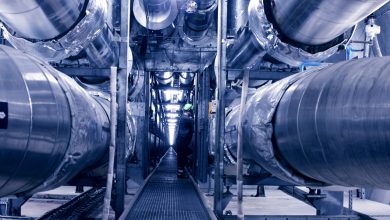
Conveyor belt systems have the potential to make your employees safer and more productive. When installed and operated effectively, conveyors streamline the movementof raw materials and products from one place to another in an easier and more energy efficient way; reducing time, effort and resources. Conveyor belts come with a lot of benefits for production operations, but in order to maximize productivity, reduce security risks, cut labour costs and improve efficiency, businesses need to take into account several factors while keeping security as a major priority.
Below are some of the easy ways you can use to optimize conveyor operations to improve overall efficiency and productivity.
Calculate the load your belts are handling
One of the most common conveyor belt problem is specification error. This is because in the absence of detailed information on the load size, weight, dimension and other characteristics, the overall performance is affected. As a result, it is important to examine your load and make the necessary calculations on the units, shape, dimensions, orientation and form of load that you will place on the conveyor belt. These characteristics should be predetermined to ensure a smooth and uninterrupted operation.
Consider:
- Shape or form: define the load as it is, a pallet, mattress, bottle, drum, engine, books or any other item.
- Dimension:If the load is a drum, box, pallet or tote, know its length, height, and width. The interface between product and conveyor belt, e.g. load bearing surface, is critical for unit items. In case of items in a box or container, like a crate of soda, the dimensions of both the carrier box and load must be determined to allow for factors like overhang clearance. For bulk materials determine the density and flow rate.
- Orientation: establish the position of the load on the conveyor belt beforehand. A load length might become a height to improve efficiency.
Understand and know how to fix common problems
Unexpected failure and servicing your conveyor belt is expensive. You can often avoid these cost by knowing how to handle the common problems like:
-
- Conveyor suddenly shuts down: If this occurs reset the emergency buttons, usually used to shut it the belt down in case of an emergency. These problems usually occurs when personnel or goods stored to close to the conveyor belt trip the emergency buttons.
- The motor runs but the belt does not move: This is often caused by overload. You can avoid this by evenly distributing your load on the belt. If the problem persists call for service.
- Load accumulates in one area of the conveyor: These can be as a result of many cause, most cases the photo eye is obstructed, dirty or offset. Check the photo eye before you call service.
- Load will not accumulate on one or more zones: In such situations check the kinks and airlines. The airbags don’t work properly if there is insufficient air. Additionally, check if the air compressor has water as this can cause serious issues with the pneumatic system.
If you can fix the issues by yourself, you will save a lot of money and time. So check your system for common problems before you call for maintenance services.
Check and test for performance
Once you’ve install new conveyor systems in your facility, you need to do an in-depth check and test to ensure you are not missing any hidden mechanical issues before you begin production. Conveyors have many moving parts designed to work in concert. As a result, a new system may require a few adjustments to ensure it performs effectively. Consider the following test procedures.
- Inspection: Inspect every part of the system to ensure safety. Check whether the guards are correctly placed, the safety stickers are easy to read, or the emergency stop buttons are easily accessible.
- Test for functionality: Place a few load on the belt from all the in-feed points and evaluate how the belt works. Small load allows for controlled evaluation process. Check for obvious errors, ensure all belts function, do all diverters and mergers work properly?
- Check for error recovery: This checks the system controls. Induce some error to the system to see how it recovers.
Proper testing provides a guarantee that the system is working effectively today and in the future. Don’t wait to discover errors during the production process because it will slow down production since you’ll need to make modifications. It’s easier to make modifications during testing than when the system is running and operational.
Choose and integrate the right horizontal and vertical conveyors
When your business operations, product characteristics, throughput or plant layout need changes in elevation, ensure you select the right type of belt. You need to consider the number of infeed/discharge, the elevation, interface with horizontal transport system, proximity to workers and safety. A change in elevation can make or break the productivity and efficiency of your conveyor belt system thus you need to analyze all the factors if you want to achieve an optimum solution.
Design workstations ergonomically
Installing a conveyor belt in combination with the workstations is a great way to improve workers productivity and increase safety. Workers usually develop musculoskeletal disorders when they have to lean, stoop, twist or reach when performing task; this results in a less productive workforce. A well designed conveyor workstation reduces health and security risks while optimizing productivity and efficiency. The two biggest factors to keep in mind are:
- Work surface height: Height at which hands are normally held to perform tasks. Heavier tasks require lower work surface height than light, precise tasks.
- Reach distance: Ensure you implement short distances in areas of repetitive reaching, about 18 inches of the front of the operator’s body. This increases productivity and help avoid health risks by reducing repeated forward reaching.
Conclusion
To achieve conveyor systems efficiency and longevity, you require proper planning and maintenance. Performing test runs and training on the common problems might seem like a hard task, but in the long run, it’ll help prevent downtimes in production, resulting in higher profits and efficiency.




